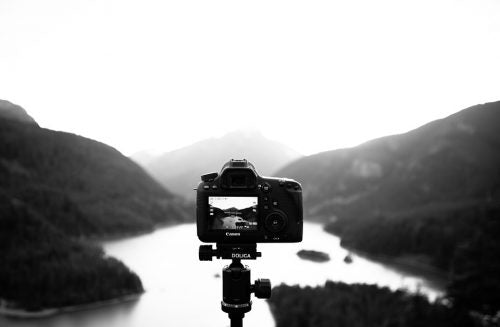 Use a fast lens
A fast lens refers to a lens with a wide aperture. The wider your aperture, the more light it lets in. If you're using a DSLR like the Canon EOS 6D from Beachcamera.com, faster lenses are easy to come by and you can pick them up for a good price. The cheapest lens for pretty much any DSLR is a 50mm prime lens. In most cases, an aperture of f/1.8 is as wide as you want to go because f/1.8 at 50mm provides a very shallow depth of field. You'll let in plenty of light this way and can get some beautiful photos in low-light conditions.
Crank up your ISO
For the most part, this is the easiest way to take low light photos with the fewest disadvantages. High ISOs come with higher noise levels, which isn't terribly appealing. If you're printing small photos or just posting to the web, however, the amount of noise isn't really going to show up too much and so it's nothing to worry about. It´s very different from camera to camera how well it performs with high ISO settings, so it´s important to play with ISO by taking test shots.
Flash or no flash?
If you do have to use a flash, try to avoid the on-camera pop-up. It tends to flatten the appearance of the image because the light is hitting the subject directly. Invest in an off-camera flash, and use diffusers from Beachcamera.com to soften the light. If you can avoid using flash completely, simply use window light, making sure to place yourself as close to a window as possible. Your photos might look dark when you look at the back of your camera, but don´t stress, you will do the last work in post-production.
Slow down your shutter speed
When you take a picture, the camera's shutter opens and closes. The speed at which this happens is your shutter speed. More light is captured the longer the shutter remains open. The longer the shutter is open, the more you'll see motion blur as well. Unless you want your subjects to be blurry, this is not really an option. Keep in mind that a good rule of thumb for clear hand-held shots is no slower than 1/60 of a second. Use a tripod if you’re shooting at anything slower than 1/60 of a second. Although, you can have success at slower hand-held shots using lenses with image stabilization.
Use a fast lens
A fast lens refers to a lens with a wide aperture. The wider your aperture, the more light it lets in. If you're using a DSLR like the Canon EOS 6D from Beachcamera.com, faster lenses are easy to come by and you can pick them up for a good price. The cheapest lens for pretty much any DSLR is a 50mm prime lens. In most cases, an aperture of f/1.8 is as wide as you want to go because f/1.8 at 50mm provides a very shallow depth of field. You'll let in plenty of light this way and can get some beautiful photos in low-light conditions.
Crank up your ISO
For the most part, this is the easiest way to take low light photos with the fewest disadvantages. High ISOs come with higher noise levels, which isn't terribly appealing. If you're printing small photos or just posting to the web, however, the amount of noise isn't really going to show up too much and so it's nothing to worry about. It´s very different from camera to camera how well it performs with high ISO settings, so it´s important to play with ISO by taking test shots.
Flash or no flash?
If you do have to use a flash, try to avoid the on-camera pop-up. It tends to flatten the appearance of the image because the light is hitting the subject directly. Invest in an off-camera flash, and use diffusers from Beachcamera.com to soften the light. If you can avoid using flash completely, simply use window light, making sure to place yourself as close to a window as possible. Your photos might look dark when you look at the back of your camera, but don´t stress, you will do the last work in post-production.
Slow down your shutter speed
When you take a picture, the camera's shutter opens and closes. The speed at which this happens is your shutter speed. More light is captured the longer the shutter remains open. The longer the shutter is open, the more you'll see motion blur as well. Unless you want your subjects to be blurry, this is not really an option. Keep in mind that a good rule of thumb for clear hand-held shots is no slower than 1/60 of a second. Use a tripod if you’re shooting at anything slower than 1/60 of a second. Although, you can have success at slower hand-held shots using lenses with image stabilization.
 Whether it’s simply taking a photo inside your home, capturing an event inside a theatre or some nighttime sightseeing, you can take great photos with limited light, it will just take a little more work.
Whether it’s simply taking a photo inside your home, capturing an event inside a theatre or some nighttime sightseeing, you can take great photos with limited light, it will just take a little more work.





































